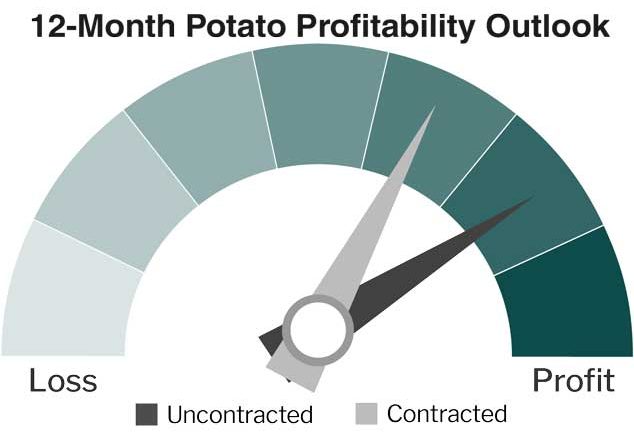|
Click to listen to this article
|
Uncontracted growers benefited from high open market prices as processors actively bought open market potatoes. The USDA forecasts production expenses will rise across nearly all categories creating headwinds for potato growers.
Industry drivers
National production down 10%, Northwest production down slightly
Potato production in the Northwest was down by 9.34 million lbs. due to year-over-year reductions in Idaho and Oregon. While Washington production increased, volume was 4.4% lower than the five-year historical average. Northwest production has decreased for two consecutive years due to drought issues which impacted yields. In Idaho, an unusually hot August impacted both yields and size with fewer potatoes able to bulk-up. National potato production fell by 10% from the 2021 crop, with significant losses in California, Idaho and Michigan.
U.S. 2022 Potato Production (in million lbs.) and Year-Over-Year Change
-and-year-over-year-change.jpg?sfvrsn=e4f09f65_2)
Source: USDA NASS, Complied by AgWest.
Processors and fryers purchasing open potatoes
Potato processors have been actively purchasing open potatoes. In Idaho, a processor recently purchased over 2 million cwt of potatoes at $25 per cwt, more than double 2021 open prices. In the Columbia Basin, growers received $17 per cwt for open potatoes. Potato yields were down 50 to 75 sacks per acre in the Northwest, and processors and fryers want to ensure that they have enough potatoes to keep operating lines going until the new crop.
During October 2022, fryers had 54.5 million lbs. of potatoes in storage which aligns with the five-year average. However, in 2021 fryers had over 72 million lbs. of potatoes in storage and still had to ship potatoes from as far as Maine to have enough inventory to meet demand. If demand is strong, fryers will likely purchase more open potatoes and could face inventory challenges.
Demand for French Fries is strong but could face challenges, a looming global economic downtown will negatively impact how often consumers eat out. Lamb Weston’s CEO stated that he expects volatility in restaurant demand throughout 2023 and is seeing current trends reflective of consumer behavior from 2007-2009. Despite headwinds, potatoes tend to be resilient during periods of economic uncertainty.
2023 planting decisions
Producers have difficult planting decisions for 2023. National potato production has been declining since 2019, even with increases in planted acres, and several years of tight crops have resulted in higher prices. Historically, production declines coupled with high prices have caused serious expansions in potato acres (in 1981, U.S. acres increased by 8.6%). Northwest fryers will likely encourage more production as they face potato supply issues for the second consecutive year. Potato producers, while incentivized by higher prices, face irrigation concerns, high production expenses and a tight potato seed supply.
Profitability
The USDA forecasted that all input costs categories will be higher throughout 2023. Fresh growers will likely negotiate higher contract prices, but still risk profit margins being squeezed by production costs and irrigation challenges. Contract growers have more certainty and can assess if there are operational adjustments or risk management tools they can use to reduce risks associated with rising production costs. Many fresh growers already have structured their operations to address the possibility of water access issues.
Open growers have benefitted from higher prices during the last quarter of 2022. Historically, open prices improve during the first quarter of the year (sometimes softening when planting intentions are announced in April). Open growers will benefit from higher prices while facing the same headwinds as contract growers.

